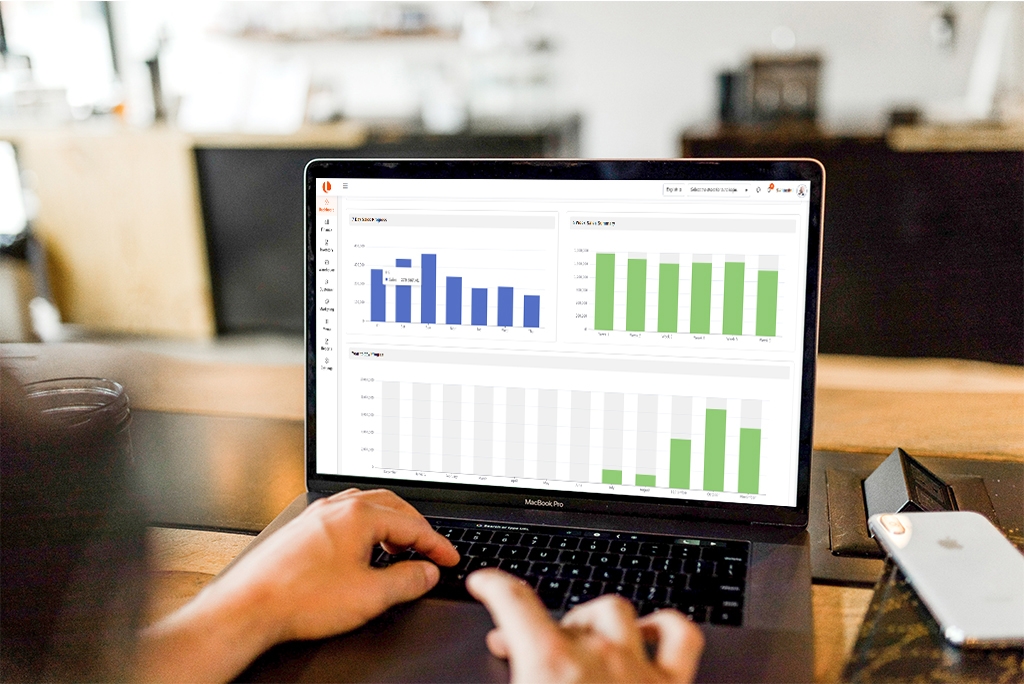The restaurant industry has seen tremendous growth in recent years, with the number of restaurants increasing drastically. This growth has led to a rise in competition and cost, forcing restaurateurs to seek out solutions to make their businesses more efficient and profitable.
One potential solution is investing in a restaurant management system. A restaurant management system can help streamline operations by tracking orders, inventory, customer data and more.
A restaurant management system is a software solution designed to help restaurants manage their operations more efficiently. It provides a set of tools for automating and streamlining various tasks and processes, such as taking orders, managing menus, tracking inventory, and analyzing sales data.
The goal of a restaurant management system is to help restaurants improve their efficiency, reduce costs, and increase profitability.
Why you should invest in a restaurant management system ?
A restaurant management system is an essential tool for any restaurateur or food service business that wants to optimize their operations and increase profits. A good restaurant management system provides a comprehensive suite of tools designed specifically to help restaurants manage their day-to-day needs.
Improved efficiency
Efficiency is a key aspect of running a successful restaurant. By automating tasks and processes, a restaurant management system helps to streamline operations and reduce the amount of time and resources required to perform these tasks.
For example, taking orders through a POS system is typically faster and more accurate than taking orders manually. The system can also help automate the process of tracking inventory levels, reducing the risk of running out of stock, and improving the accuracy of ordering new supplies.
In addition, a restaurant management system can also generate reports on sales data, inventory levels, and customer behavior, which can help managers make informed decisions. These reports can be generated quickly and easily, providing real-time insights into the performance of the restaurant.
Better customer experience
A restaurant management system can play a significant role in improving the customer experience by offering features that enhance the overall dining experience.
For example, online ordering allows customers to place orders from their own devices, making the ordering process faster and more convenient. Mobile payments allow customers to pay for their orders using their mobile phones, reducing the time spent waiting for the bill and making the payment process more efficient.
Loyalty programs can also be integrated into the restaurant management system, allowing restaurants to reward their repeat customers and encourage loyalty. This can be done through loyalty points, discounts, and special promotions.
In addition, a restaurant management system can also provide features such as customer relationship management (CRM), which can help restaurants track customer preferences and behavior, allowing them to provide a more personalized experience.
Overall, by providing features that enhance the customer experience, a restaurant management system can help improve customer satisfaction and loyalty, leading to repeat business and increased profitability.
Improved Marketing
Some of the ways a restaurant management system can improve marketing include:
Customer data and analytics: A restaurant management system can help gather valuable data on customer behavior, preferences, and feedback, which can inform marketing efforts. This information can be used to personalize marketing campaigns, target specific demographics, and improve overall customer engagement.
Email and SMS marketing: A restaurant management system can help automate email and SMS marketing campaigns, allowing restaurants to reach customers with personalized and targeted messages.
Social media integration: Many restaurant management systems integrate with popular social media platforms, such as Facebook and Instagram, allowing restaurants to easily share updates, promotions, and menu changes with their followers.
The ultimate guide to make your restaurant’s social media presence Great!
Online ordering and delivery: An online ordering and delivery system can help increase the visibility and accessibility of a restaurant, making it easier for customers to order and receive their food.
By providing tools and insights to improve marketing efforts, a restaurant management system can help restaurants reach and engage their target audience, driving sales and increasing brand recognition.
Restaurant management systems can make it simple to increase your revenue.
The primary benefit of using a restaurant management system is that it can be tailored to the specific needs of each business. Restaurants can customize their systems with features such as order tracking, employee scheduling, inventory control, loyalty programs, and data analytics.
Through these features, they are able to identify what products are selling well and which need improvement in order to maximize profits. Additionally, this system provides businesses with access to real-time insights on customer preferences, which helps them make informed decisions about menu items or services that will bring in more customers and generate higher revenues.

Conclusion
Investing in a restaurant management system can make a huge difference to any restaurant’s bottom line. A restaurant management system provides improved efficiency, increased security, better customer service, and improved marketing capabilities. This makes it easier for restaurants to manage their operations and make sure they are getting the most out of their investments.
Investing in a restaurant management system is an investment that pays off in terms of cost savings, better customer experiences, and improved performance.





